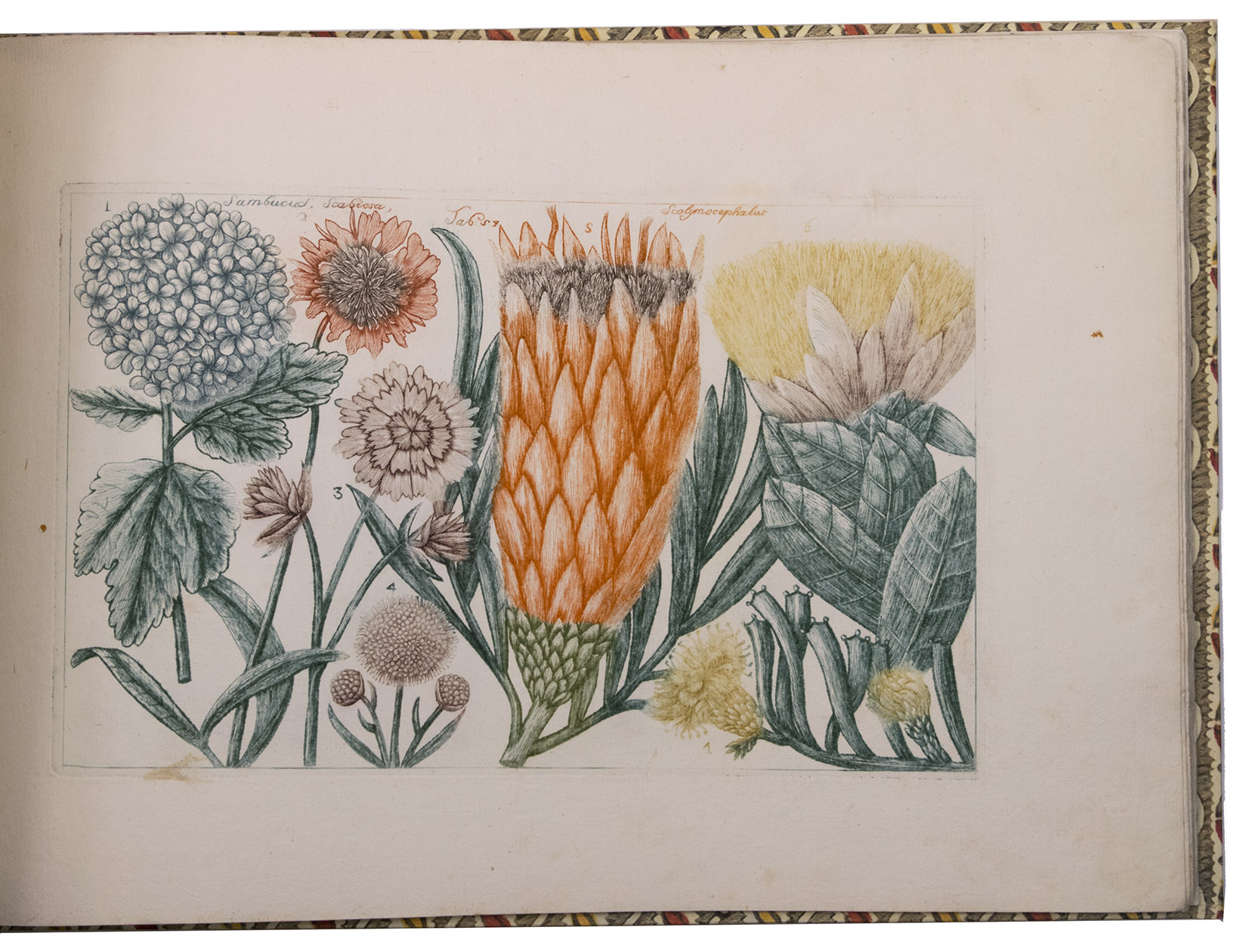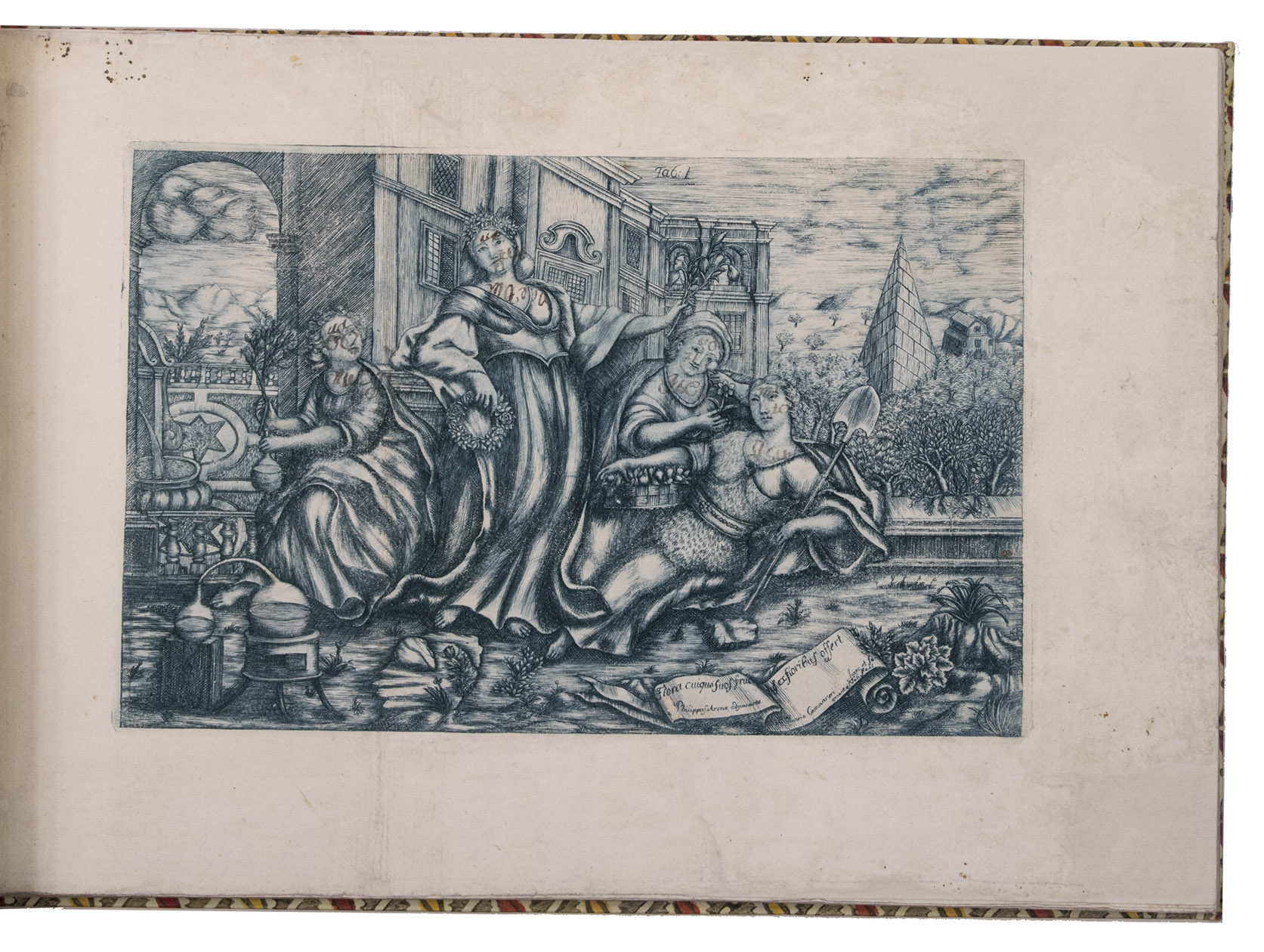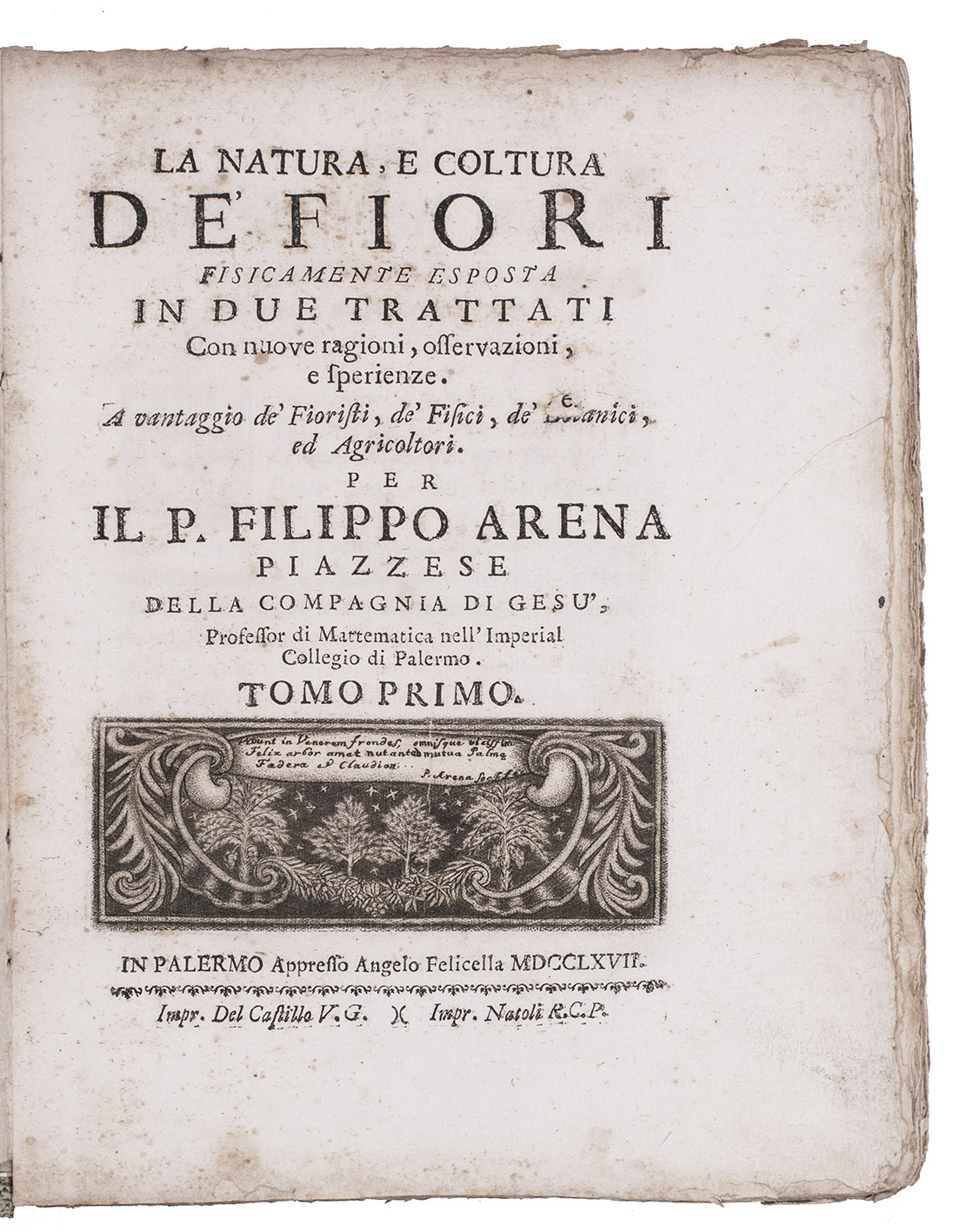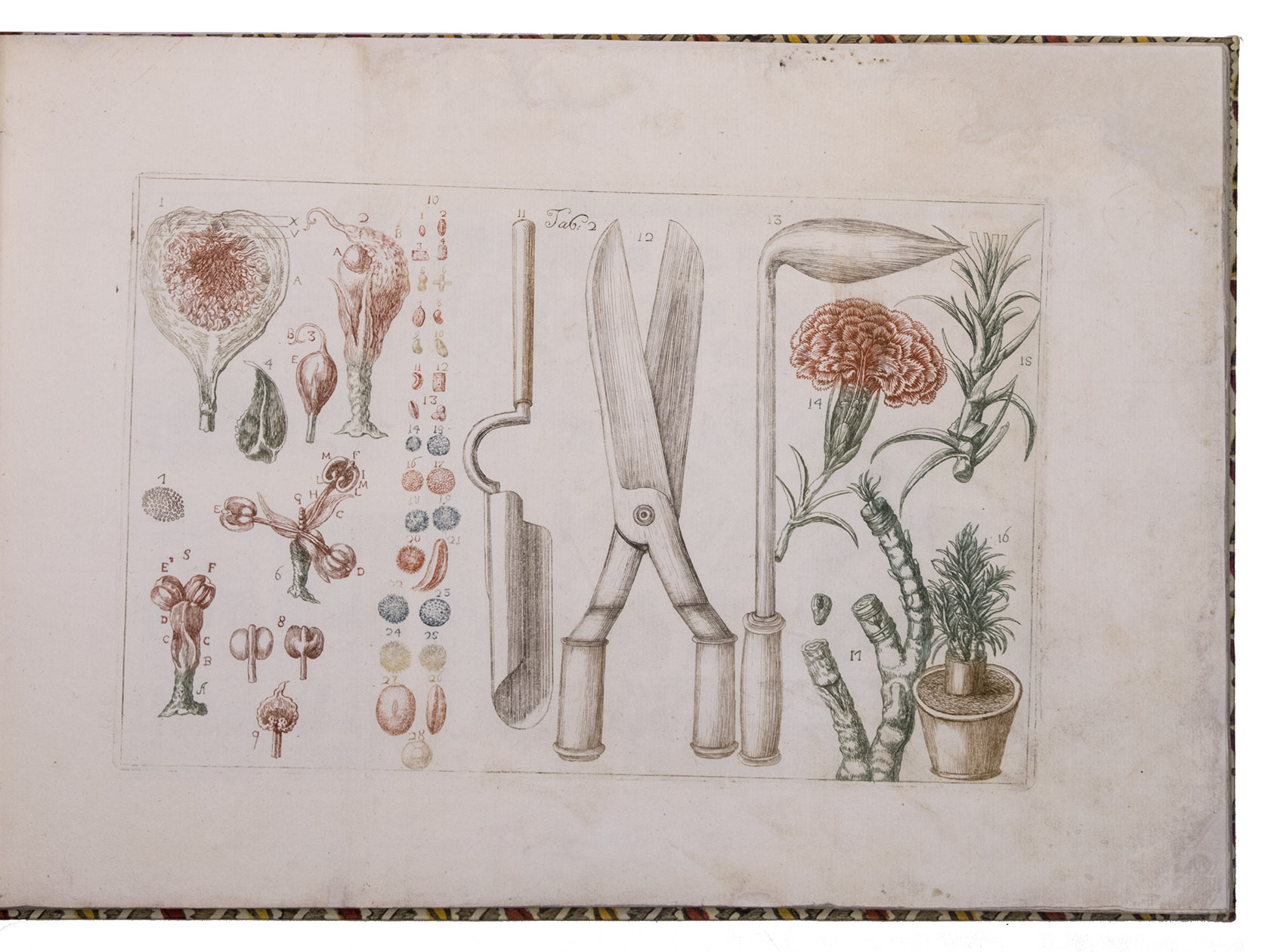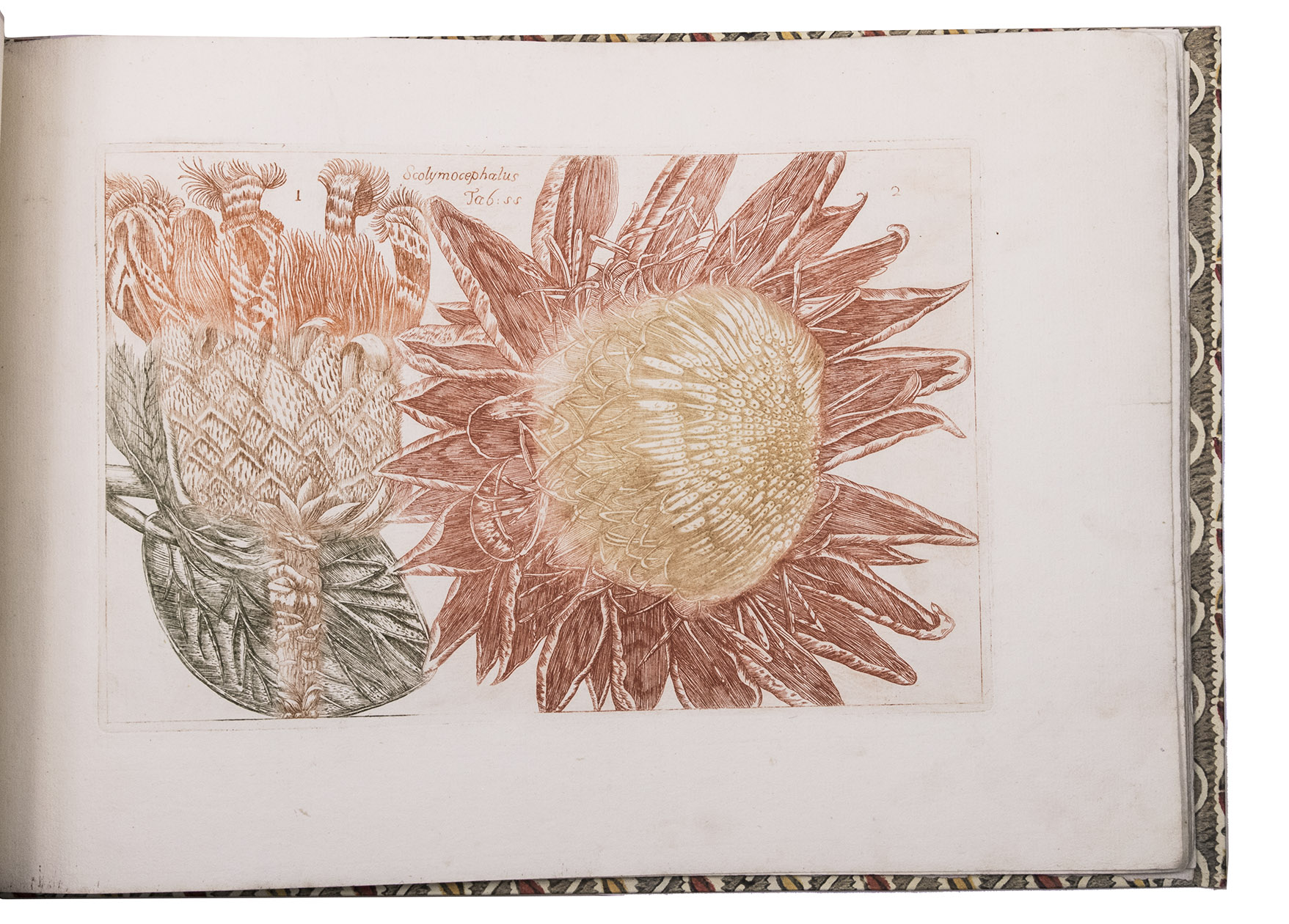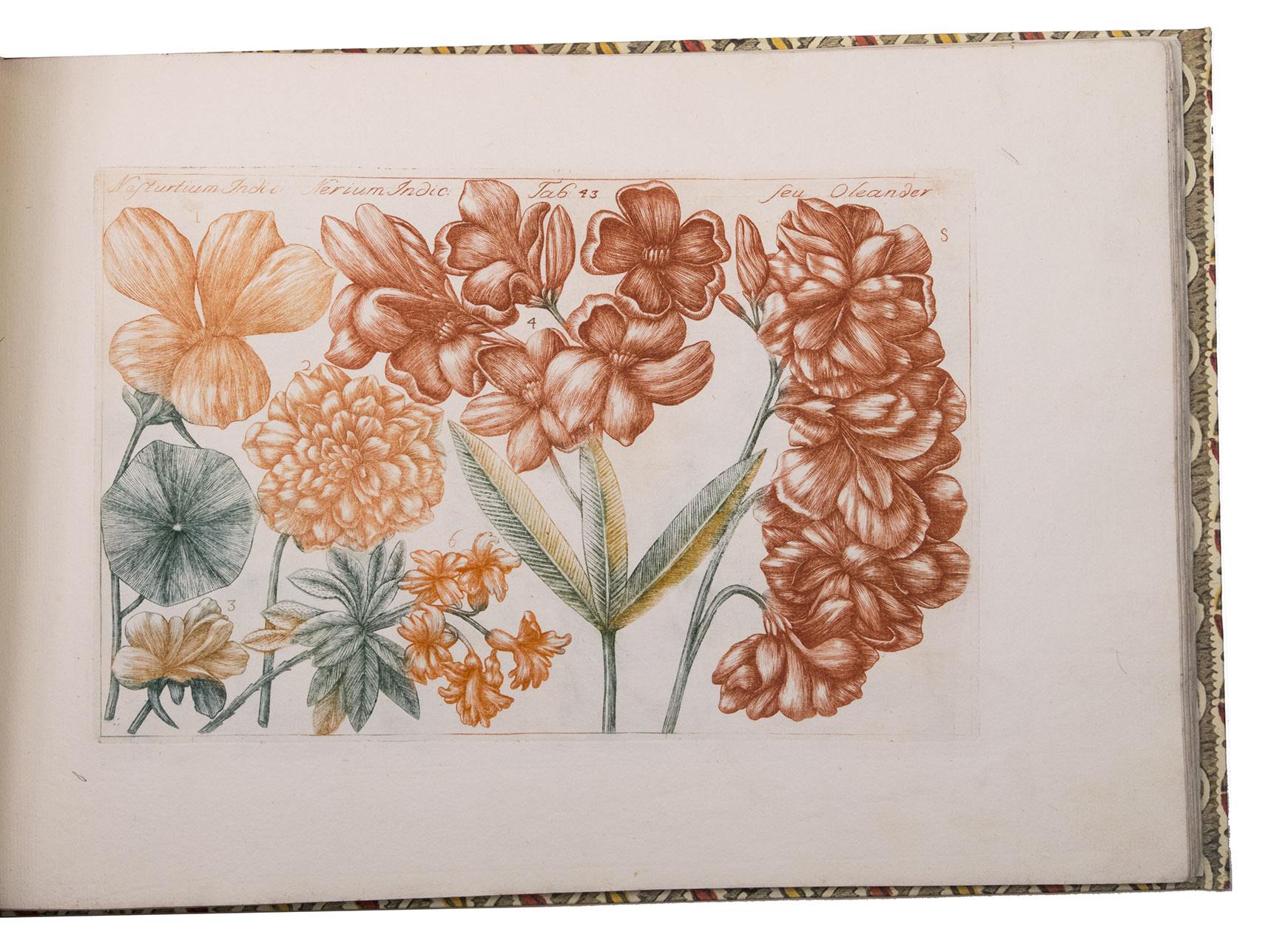ARENA, Filippo.
La natura, e coltura de' fiori fisicamente esposta.
Palermo, Angelo Felicella, 1767-1768. 2 text volumes (4to), bound as 3, and 1 plates volume (oblong folio). With 65 engraved plates printed in colour, occasionally combining up to 6 colours on one plate. The first plate (here wholly printed in dark green) serves as an (allegorical) frontispiece and includes the name of the author and that of Mario Cammerari, the second plate depicts tools, seeds and details of flowers, the third plate contains parterre designs and the other plates depict flowers (several to each plate). Modern flexible boards, covered with decorated paper. VIII, 440; VIII, “116” [= 416]; [2], 167, [1 blank], [8] pp. plus 65 plates.
€ 85,000
Only copy known with all engraved plates printed in colour, of the first edition of an Italian florilegium. The 65 engravings really stand out and are sometimes printed in up to 6 different colours. The text is written by Filippo Arena (1708-1789), a Jesuit professor of mathematics and philosophy at the University of Palermo, with a real passion for botany. "But because La natura, e coltura de' fiori was printed in Sicily, an island far from the principal intellectual centres of Europe, his work became known only to a handful of contemporaries, and his significant contributions to the history of botany were never fully recognized. ... Volume one is devoted to a general discussion of botany ... In fact, it contains a remarkably advanced dissertation on the sexual generation of plants, including the function of pollen and the importance of its transmission by insects, a discovery that has traditionally been attributed to the German botanist Joseph Gottlieb Koelreuter ... The second volume deals with horticulture, in particular the cultivation of flowers" (Tomasi).
Arena also took it upon himself to engrave the 65 plates, which he did with the help of his Jesuit colleague Mario Cammerari. For this he drew heavily on Weinmann's Phytanthoza iconographia (1737-1745). In the last part of the text (p. 4, part 4) the author comments on the colour prints used in some copies. Even complete copies of this work in black & white are rare on the market, and we have not located any other copy with the plates printed in colour.
Without the letterpress title page to the plates volume, often lacking. Text is foxed, about half of the plates have at least some minor restorations in the margins, occasionally just touching the plates (once with a restored clean tear halfway through the illustration), and the first and last few leaves more heavily restored, but mostly restricted to the margins. The restorations are all done professionally and afterward all plates were washed, making a very attractive set. Cat. Lindley libr., p. 10; De Belder 37; ICCU 006174; Johnston 484; Moncada, Bibl. Siciliana 103; Nissen, BBI 48; Plesch, pp. 128-129; Tomasi, Oak Spring flora 38; not in Dunthorne; GFB; Hunt.
Related Subjects:
